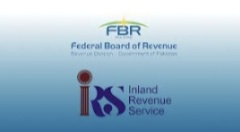The Federal Board of Revenue (FBR) has undertaken a significant restructuring initiative, leading two parts of the existing Customs Enforcement Karachi unit in a recent development.
Additionally, two new collectorates, namely the Collectorate of Khuzdar and the Collectorate of Taftan, have also been established as part of this organizational transformation.
The decision to split Customs Enforcement Karachi into two distinct entities, namely Customs Enforcement Ports and Customs Enforcement Karachi, has been widely regarded as a positive step towards enhancing operational efficiency.
The move aims to streamline enforcement activities and facilitate more focused oversight.
Similarly, the establishment of the Khuzdar Collectorate has been welcomed as a beneficial decision that aims to strengthen administrative capabilities in the region.
However, the creation of the Collectorate of Taftan has raised concerns among experts and stakeholders. Critics argue that this move is driven primarily by the need to accommodate newly promoted officers and might result in the mis-allocation of valuable resources.
Previously overseen by a Superintendent, the Taftan Customs Station will now be led by a Collector, an Additional Collector, and Deputy Collector. This new structure is scheduled to come into effect on September 15, 2023.
It is worth noting that historical precedent reveals a pattern of establishing collectorates to accommodate promoted officers.
Of note, the Collectorate of Law and Prosecution (L&P), while created in the past, has yet to be fully activated or provided with the necessary funds to operate effectively.
Similarly, the transformation of airports from deputy collectorates to fully-fledged collectorates has led to heightened resource demands.
As these changes unfold, there is a growing concern over the diminishing scope of collectorate jurisdictions. Experts speculate that this trend might eventually lead to the introduction of examinations and assessments for various collector roles, potentially giving rise to distinct collector groups based on responsibilities and scope.
With the activation dates of these new entities drawing near, the revenue board and stakeholders must closely monitor the implications of this restructure, ensuring that resources are allocated judiciously and operational effectiveness is maintained across all newly established collectorates.

